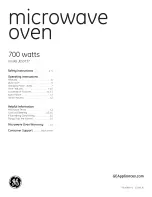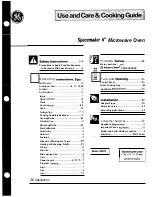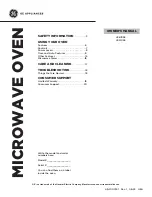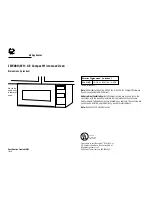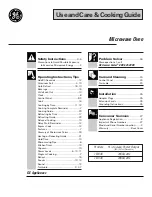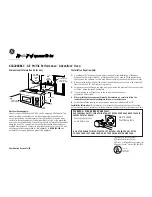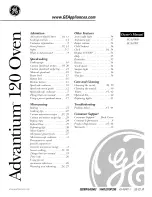
49
BEFORE USING MICROWAVE
About Utensils and Coverings
It is not necessary to buy all new cookware. Many
pieces already in your kitchen can be used successful-
ly in your new microwave oven. Make sure the utensil
does not touch the interior walls during cooking.
Use these utensils for safe microwave cooking and
reheating:
•
glass ceramic (Pyroceram®), such as Corningware®
• heat-resistant
glass
(Pyrex®)
• microwave-safe
plastics
• paper
plates
•
microwave-safe pottery, stoneware and porcelain
•
browning dish (Do not exceed recommended pre-
heating time. Follow manufacturer’s directions.)
These items can be used for short-time reheating of
foods that have little fat or sugar in them:
• wood,
straw,
wicker
About Foods
CAUTION
•
Some products such as whole eggs and sealed
containers—for example, closed jars—will ex-
plode and should not be heated in this micro-
wave oven. Such use of the microwave oven
could result in injury.
•
Do not boil eggs in a microwave oven. Pressure
will build up inside egg yolk and will cause it to
burst, possibly resulting in injury.
•
Spontaneous boiling—Under certain special
circumstances, liquids may start to boil during
or shortly after removal from the microwave
oven. To prevent burns from splashing liquid, we
recommend the following: before removing the
container from the microwave oven, allow the
container to stand in the microwave oven for
30 to 40 seconds after the microwave oven has
shut off . Do not boil liquids in narrow-necked
containers such as soft drink bottles, wine fl asks,
or especially narrow-necked coff ee cups. Even
if the container is opened, excessive steam can
build up and cause it to burst or overfl ow.
•
Do not defrost frozen beverages in nar-
row-necked bottles (especially carbonated bev-
erages). Even if the container is opened, pressure
can build up. This can cause the container to
burst, possibly resulting in injury.
•
Hot foods and steam can cause burns. Be care-
ful when opening any containers of hot food,
including popcorn bags, cooking pouches and
boxes. To prevent possible injury, direct steam
away from hands and face.
IMPORTANT
•
Operating the microwave with no food inside for
more than a minute or two may cause damage
to the microwave oven and could start a fi re. It
increases the heat around the magnetron and
can shorten the life of the microwave oven.
•
Do not overcook potatoes. They could dehy-
drate and catch fi re, causing damage to your
microwave oven.
•
Do not pop popcorn in your microwave oven un-
less in a special microwave popcorn accessory or
unless you use popcorn labeled for use in micro-
wave ovens.
•
Foods with unbroken outer “skin” -- such as po-
tatoes, hot dogs, sausages, tomatoes, apples,
chicken livers and other giblets, and egg yolks
-- should be pierced to allow steam to escape
during cooking.
•
Avoid heating baby food in glass jars, even with
the lid off . Make sure all infant food is thoroughly
cooked. Stir food to distribute the heat evenly. Be
careful to prevent scalding when warming formula
or breast milk. The container may feel cooler than
the milk really is. Always test the milk before feed-
ing the baby.
•
Cook meat and poultry thoroughly—meat to at
least an INTERNAL temperature of 160°F and poul-
try to at least an INTERNAL temperature of 165°F
Cooking to these temperatures usually protects
against food-borne illness.































